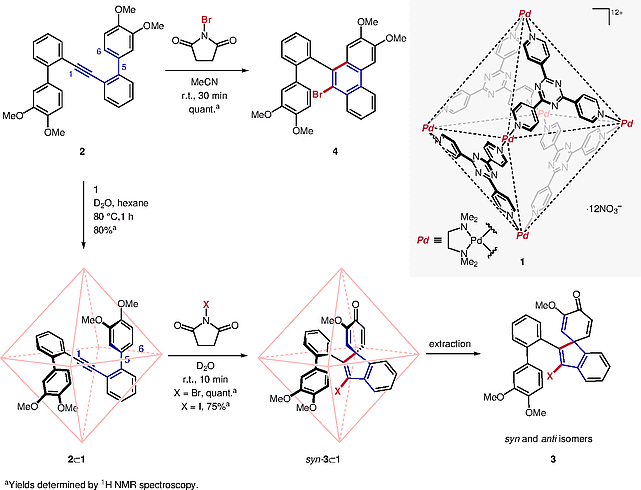
Contributors: Dahui Zhao, Di Zhang
Significance
How to manipulate molecules to adopt different, designated reaction paths and whether particular molecular devices can be designed to serve such purposes are intriguing questions. In this paper, by creating a molecular cage to host a biphenylacetylene derivative, a conventional 6-endo-dig cyclization was successfully diverged down to a 5-endo-dig path, showing diastereoselectivity. The authors envision that the chemoselectivity control demonstrated by this host–guest system may promise a mimic of the natural enzymatic pockets.
Comment
By investigating the crystal structure of complex 2⊂1, the unusual cyclization regioselectivity observed with 2 was attributed to the orientation of the biphenyl moiety inside the cage, which suppresses the reactivity of the conventional nucleophilic site (C-6). The structure of syn-3⊂1, with its isomeric features, was determined by NMR spectroscopic analysis. Interestingly, the molecular cage appears to allow for proper interactions between the sequestered substrate and the electrophilic reagent outside the cage.

Takezawa H, Fujii Y, Murase T, Fujita M.
The University of Tokyo, Japan
Angew. Chem. Int. Ed. 2022; 61: e202203970
DOI: 10.1002/anie.202203970.
